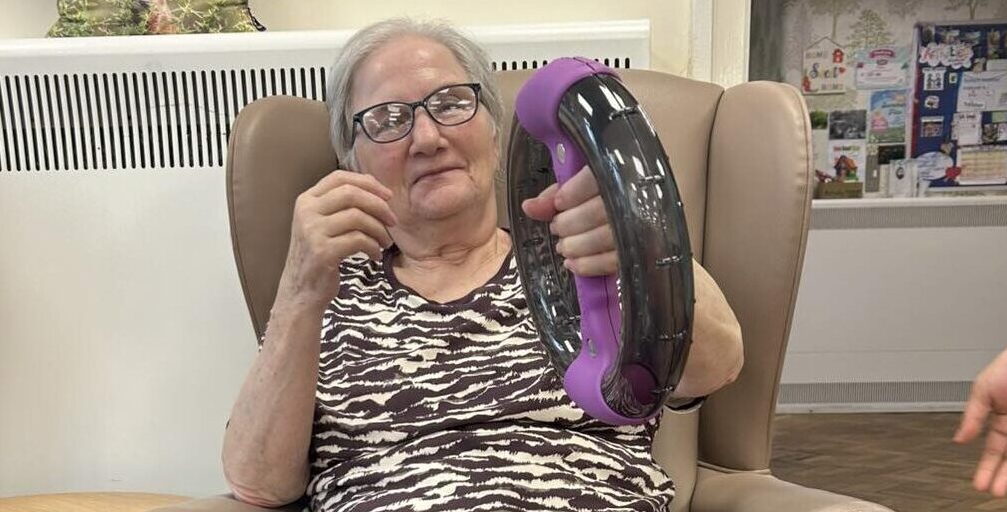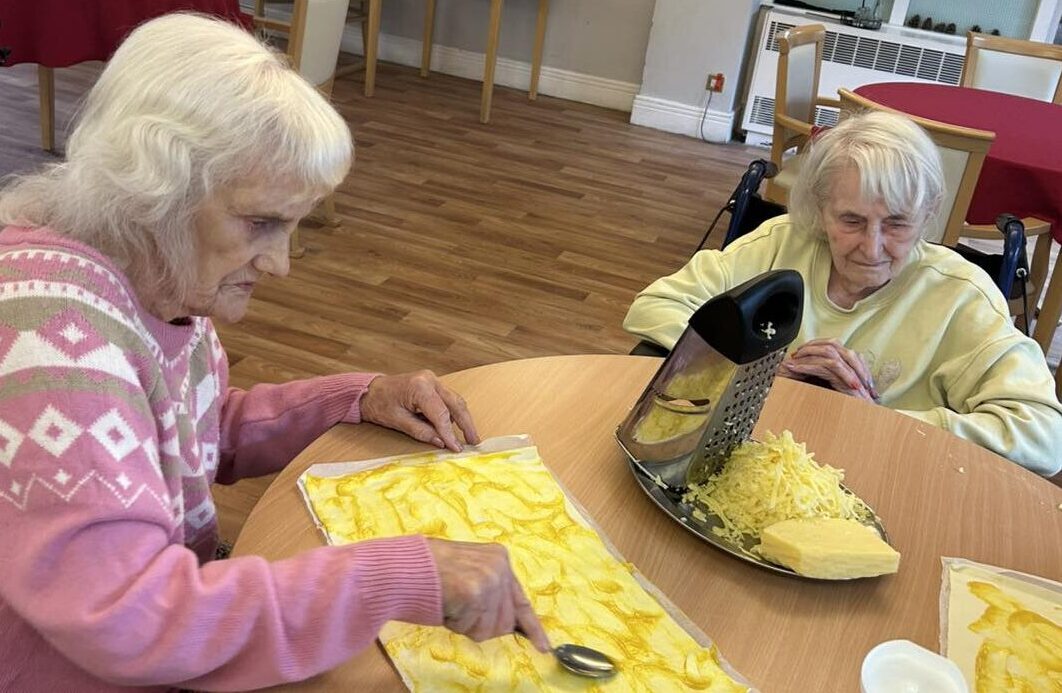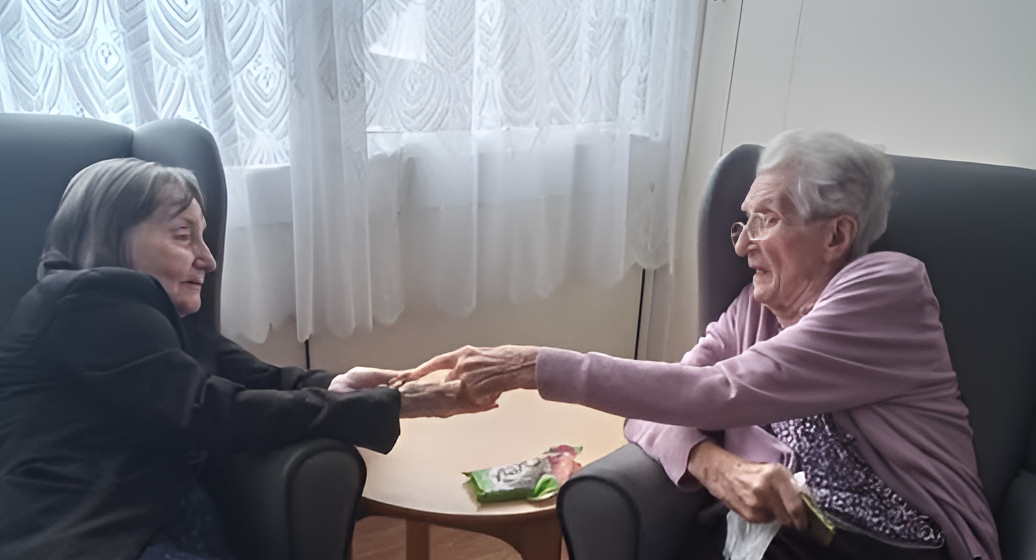Are you looking for a way to bring more joy and expression into the lives of care home residents? Look no further than creative arts therapy!
This innovative approach harnesses the power of art, music, dance, and other creative activities to enhance well-being and empower individuals in care homes.
In this article, we will explore how creative arts therapy can unleash expression and joy in care home residents, improving their overall quality of life.
Creative art therapy has been proven to have numerous benefits for individuals in care homes. Through artistic expression, residents are able to tap into their emotions and communicate in ways that may be difficult through traditional forms of communication.
Whether it’s painting a picture, playing an instrument, or engaging in a dance routine, these creative activities provide an outlet for self-expression and connection with others.
The act of creating something beautiful or meaningful can bring immense joy and fulfilment to individuals who may otherwise feel isolated or limited by their circumstances.
By incorporating creative arts therapy into care home settings, caregivers and staff can greatly enhance the well-being of residents.
Engaging in artistic pursuits has been shown to reduce stress levels, improve mood, increase self-esteem, and even alleviate symptoms of depression.
These activities also promote physical activity and cognitive stimulation, which are important factors in maintaining overall health and vitality.
Creative arts therapy provides a holistic approach to care that focuses on the emotional, mental, and physical well-being of each individual resident.
In conclusion, creative arts therapy offers a unique opportunity to unleash expression and joy within care home residents’ lives.
Through art forms such as music, dance, painting or playing instruments; patients have found new ways not only to express themselves but also connect with others around them – providing an outlet that is both engaging and therapeutic simultaneously!
By incorporating these techniques into everyday routines at your facility (or wherever someone resides), you’ll be able not only to see improvements like reduced stress levels but heightened moods as well – all leading towards improved self-esteem and decreased symptoms of depression.
It’s clear then why this type of therapy should be considered when caring for individuals residing within long-term care settings – because it provides a holistic approach catered specifically towards emotional, mental and physical well-being needs!
The Power of Art in Care Home Therapy
Unleash your inner creativity and experience the transformative power of art in care home therapy. Engaging in artistic activities has been proven to have numerous benefits for residents in care homes. Some of these benefits include increased self-expression, improved emotional well-being, and enhanced cognitive function.
Whether it’s painting, drawing, or sculpting, the act of creating art allows individuals to tap into their imagination and express themselves in a non-verbal way.
Through art therapy, care home residents can explore their thoughts and emotions in a safe and supportive environment. Art provides an outlet for them to release any pent-up feelings or frustrations they may have. Additionally, engaging in artistic activities can help stimulate memory recall and improve concentration skills.
The process of creating art also promotes relaxation and stress reduction, allowing residents to experience a sense of joy and accomplishment.
Now let’s delve into the subsequent section about exploring the healing benefits of music.
Exploring the Healing Benefits of Music
Exploring the Healing Benefits of Music can have a profound impact on the well-being and emotional state of individuals. Studies have shown that music therapy has been found to reduce anxiety levels by 65%.
When listening to or creating music, the brain releases dopamine, a neurotransmitter associated with pleasure and reward. This chemical reaction can lead to feelings of joy, relaxation, and overall improved mood.
Additionally, music has the power to evoke memories and emotions, allowing individuals to connect with their past experiences in a meaningful way. Whether it’s through playing an instrument, singing along to a favourite song, or simply listening attentively, music therapy provides a therapeutic outlet for self-expression and emotional release.
As we move into the subsequent section about ‘dance as a form of self-expression and connection’, it is important to recognize that just like music therapy, dance also offers unique benefits for care home residents.
Dance as a Form of Self-Expression and Connection
Dance can be a transformative and powerful way for you to express yourself and form deep connections with others. Whether it’s through graceful movements or lively rhythms, dancing allows you to communicate emotions that may be difficult to put into words.
As you move your body, you release pent-up energy and experience a sense of freedom and liberation. It’s a form of self-expression that goes beyond language barriers, allowing you to connect with others on a deeper level.
Beyond personal expression, dance also promotes social interaction and fosters a sense of community. When you participate in group dances or partner routines, you engage in nonverbal communication with your fellow dancers. Through synchronized movements, you develop trust and cooperation, building meaningful connections with those around you.
Dance brings people together in a shared experience that transcends age, background, and abilities.
As we explore the benefits of dance as a form of self-expression and connection, we will now delve into how creative activities can enhance the well-being of care home residents without missing a beat.
Enhancing Well-being Through Creative Activities
Immerse yourself in the vibrant palette of life, as you engage in a symphony of colours and textures that nourish your soul. Creative activities have the power to enhance your overall well-being and bring a sense of joy and fulfilment. Whether it’s painting, crafting, or even playing an instrument, these activities can transport you to a place of pure happiness and self-expression.
By engaging in creative endeavours, you’re able to tap into your innermost thoughts and emotions, allowing them to flow freely onto the canvas or through your fingertips. It’s through this process that you can truly connect with yourself on a deeper level, fostering a greater sense of self-awareness and contentment.
As you explore different creative activities, you may find that they serve as a form of therapy for your mind and body. Creating art has been shown to reduce stress levels, improve cognitive function, and even boost immune system functioning. Engaging in these activities can provide a much-needed escape from the worries and pressures of everyday life, allowing you to focus solely on the present moment.
The act of creating something beautiful with your own hands can be incredibly empowering and uplifting. So let go of any inhibitions or doubts, embrace the artistic journey ahead, and discover the incredible benefits that creative activities can bring into your life.
Transition: Now that we’ve explored how creative activities can enhance well-being, let’s delve into how they empower care home residents through creativity…
Empowering Care Home Residents Through Creativity
Through the power of your imagination and the freedom to create, you can find a renewed sense of purpose and fulfilment. Creative activities have the ability to empower care, home residents, allowing them to express themselves in unique and meaningful ways.
Whether it’s painting, writing, or engaging in music therapy, these creative outlets provide an avenue for self-expression that goes beyond words. Participating in creative activities can help you tap into emotions and memories that may have been dormant for some time. It allows you to explore different facets of yourself and connect with others on a deeper level.
By engaging in artistic endeavours, you are given the opportunity to break free from limitations and embrace your inner artist. The act of creation not only brings joy and satisfaction but also helps build confidence and self-esteem. So don’t be afraid to unleash your creativity – it has the power to transform your life in ways you never imagined.
Frequently Asked Questions
What are some common challenges faced by care home residents when participating in creative arts therapy?
Participating in creative arts therapy can pose challenges for care home residents. These may include physical limitations, cognitive impairments, emotional barriers, and lack of confidence. However, with support and encouragement, they can overcome these obstacles and find joy in self-expression.
How can creative arts therapy help in improving the emotional well-being of care home residents?
Creative arts therapy can improve the emotional well-being of care home residents by providing an outlet for self-expression, reducing stress and anxiety, promoting social interaction, and enhancing feelings of joy and fulfilment.
Are there any specific creative activities that have shown particularly positive outcomes for care home residents?
Let your imagination soar as you explore the delightful world of creative arts therapy. Discover how activities like painting, music, and dance can unlock joy and expression in care home residents, fostering emotional well-being.
What qualifications or training do creative arts therapists have?
Creative arts therapists typically have a master’s degree in art therapy, music therapy, or drama therapy. They also undergo supervised clinical training and must be registered or licensed by a professional board or organization.
Are there any potential risks or limitations of implementing creative arts therapy in care homes?
Incorporating creative arts therapy in care homes can have limitations and potential risks. While it can enhance well-being, there may be challenges like limited resources or individual resistance to participation.
Conclusion
In conclusion, creative arts therapy has proven to be a powerful tool in unleashing expression and joy in care home residents. Through art, music, dance, and other creative activities, these individuals are able to tap into their inner selves and find healing and connection.
Imagine a blank canvas transforming into a vibrant masterpiece, capturing the essence of one’s emotions and experiences. Just like this artistic process, creative arts therapy allows care home residents to express themselves in ways that words alone can’t capture. It provides them with an outlet to release pent-up emotions, explore their identities, and find solace in the beauty of self-expression.
Furthermore, the healing benefits of music have been widely recognized. As care home residents engage in musical activities such as singing or playing instruments, they experience a sense of connection and nostalgia. Music has the power to transport them back to cherished memories or evoke feelings of comfort and joy. It stimulates their cognitive abilities and uplifts their spirits, enhancing their overall well-being.
Dance also plays a significant role in creative arts therapy. As care home residents move their bodies rhythmically to the beat of the music, they not only express themselves physically but also emotionally. Dance becomes a form of liberation from physical limitations and an opportunity for connection with others. It promotes social interaction among residents, fostering a sense of community within the care home.
Engaging in creative activities isn’t just about entertainment; it’s about empowering care home residents by giving them control over their own narratives. By creating art or participating in musical or dance performances, they develop confidence in their abilities and feel valued as individuals with unique talents to offer.
Incorporating creative arts therapy into care homes can greatly enhance the lives of its residents by providing opportunities for self-expression and connection that go beyond traditional forms of communication. The transformative power of art can bring immense joy and healing that words alone can’t convey. So let’s continue unleashing expression through creativity – painting, singing, dancing – and unlock the endless possibilities for well-being and empowerment in care home residents.




